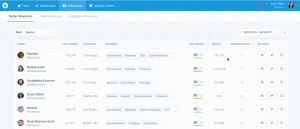With Covid-19 forcing governments to close borders and discouraging international travel, there is serious pressure on freight costs, especially for air-freight.
In a recent interview, Robert Khachatryan, Founder and CEO of Freight Right, explained that due to the cancellation of flights, their customers have been turning to ocean freight. However, carriers prioritize government contracts, mainly shipping PPE (Personal Protective Equipment), and high-paying customers.
While there is still a lot of uncertainty, it’s worth taking a look at this very important aspect of a supply chain to analyze the consequences involved in this recent phenomenon, both as a seller and as a customer.
How Covid-19 Has Affected Freight Costs
The way airlines calculate their cost is by reflecting the distance flown and the balance between demand and capacity. But the most important cause of air-freight prices soaring is due to only 20% of belly cargo still flying.
Belly cargo is the shipments that are sent in passenger flights, which represent a big chunk of the imported products, usually, 80% of transatlantic cargo travels using passenger flights.
So, why aren’t commercial passenger airlines turning to cargo airlines?
Turns out that converting empty passenger cabins to cargo is time-consuming and very expensive.
According to Marketplace.org, in March 2020, London-U.S. lanes increased of 128% and the Frankfurt-US lane of 109%. Before the pandemic, retailers were able to charge their own cargo jet for $ 250,000 dollars. Now, it would cost about $ 2 million for a round trip.
How Brands and Retailers Have Been Affected
Brands and retailers are directly affected by the category of business they run. It all boils down to the permanent changes we will see reflected in consumer’s behavior and lifestyle trends.
At the beginning of the pandemic, with China closing down and the health emergency being a priority, businesses providing medical supplies, sanitizers and wipes were the main ones to stay afloat. But other industries, like clothing, end on the other side of the spectrum.
Target and Walmart, for example, were able to stay open because they carry essential products. Most stores are closed, so people take the opportunity to shop for other things there, keeping these stores afloat.
Robert also mentioned that Amazon made changes over time. At first, Amazon only received essential products. Soon, they realized that they needed to add categories as to what products are considered “essential”.
Sure, sanitizers, wipes and soap are essential, but for people who have kids, maybe a kiddie pool or backyard toys become essential. Trends are constantly changing, because of how sudden all changes have happened. Board games and puzzles have become essential now, too, for example. People are exercising more, so exercising equipment is probably doing well.
This will have a lasting effect, since is a lifestyle change. Undeniably, this will affect categories in the future–especially now that social distancing became part of our lives.
What If You’re A Brand That Uses Amazon FBA?
Amazon made drastic changes in response to COVID-19. Some of those changes prevented many retailers from sending inventory to Amazon or printing labels. One way to deal with this was by shipping to the U.S. and keep products stored in warehouses, so when Amazon lifted the restrictions, retail sellers were a couple weeks ahead and were able to ship to Amazon with one-day notice.
Shipping to warehouses continues to happen to avoid uncertainty or disruption in the supply chains. Amazon restricts the quantities you can send to FBA. Therefore, some sellers are turning to companies to store containers in warehouses. That way, the company can drip-feed pallets to Amazon FBA, whenever is necessary without having to wait until an order is ready to get it all the way from China or Europe.
Is Ocean Freight a Good Alternative to Air Freight?
Air freight is facing different challenges at once:
- airport restrictions
- slower custom processes
- a lack of balance in two-way import and exports
- prioritizing PPE over anything else
Not to mention the ongoing rise on air freight prices. This is the reason why many businesses are opting for ocean freight, which has a set of challenges on its own.
Ocean carriers cut capacity when rates drop. This is something they’ve done for years, but they overdid it during the pandemic. Some ocean carriers are now overbooked by up to 50%.
Like airlines, everyone in the ocean freight industry expected a slump at the beginning of the year. But due to COVID-19, they took too many vessels out of rotation:
“The problem is that nobody expected the rise in production to be back so soon. The result is that now there are too many bookings and not enough vessels. This has been happening for a month.” – Robert from Freight Right
Here’s What Freight Companies are Doing
Before the pandemic, shipping was pretty much an automated process from end to end. Now, the same shipment requires much more communication and planning.
Paradigms are changing; so, it is necessary that freight companies invest more time on communicating with their customers to offer a customized solution that fits their business’ needs. Not all sellers are getting hit the same, like we explained before.
If you are a seller, inform your shipping needs so your freight forwarder can provide the right solution. If you are a freight forwarder, have an open channel of communication with your customers to better understand them.
Planning for the Future of Freight
As we explained before, product categories will have changes, and most of them will be permanent. It’s wise to know what to expect:
In the short run, air freight fuel prices are expected to continue rising. This will result in slower growth of air cargo traffic or even in a possible downturn.
In the long run, traffic should continue to grow. Air freight will probably be slowly integrated into multimodal supply chains in order to provide a better cost and time balance.
For landlocked developing countries, the struggle is to generate enough traffic to attract air freight services that are frequent enough to have a competitive price.
Here are a couple of predictions:
- Producers will agree to shorter order times for shipments.
- Manufacturers of garments, electronics, and other goods will ship their large initial order using ocean freight and then use air freight to replenish inventories to be able to compete for larger orders.
- Air freight can be used as a strategy for diversification by introducing products with shorter shelf lives or providing reliable delivery of smaller volumes.
- Air freight may be the only means for guaranteeing continuity for cold chain exports.
TIACA (The International Air Cargo Association) is participating in an initiative to create a ‘Working Document on a post-COVID-19 recovery path’. All aviation-related international organizations were involved in its creation. This document will provide comprehensive answers regarding the extent of changes in air cargo operations as a result of coronavirus.
It will propose possible recovery guidance (short-, medium-, and long-term) as well, with respective influencing factors and foreseeable challenges.
Last Words of Advice
Rates are going up and they will continue to follow an upwards trajectory.
One advantage is that warehouse space is now available in the U.S. since imports basically were halted for two months. It is a good time for sellers to take advantage of the low rates in storage to compensate for increased costs in shipping charges and waiting times.
However, the warehouses will start to fill up, so it’s better to start making arrangements now to deal with the situation now and in the future.
Business & Finance Articles on Business 2 Community
(48)






